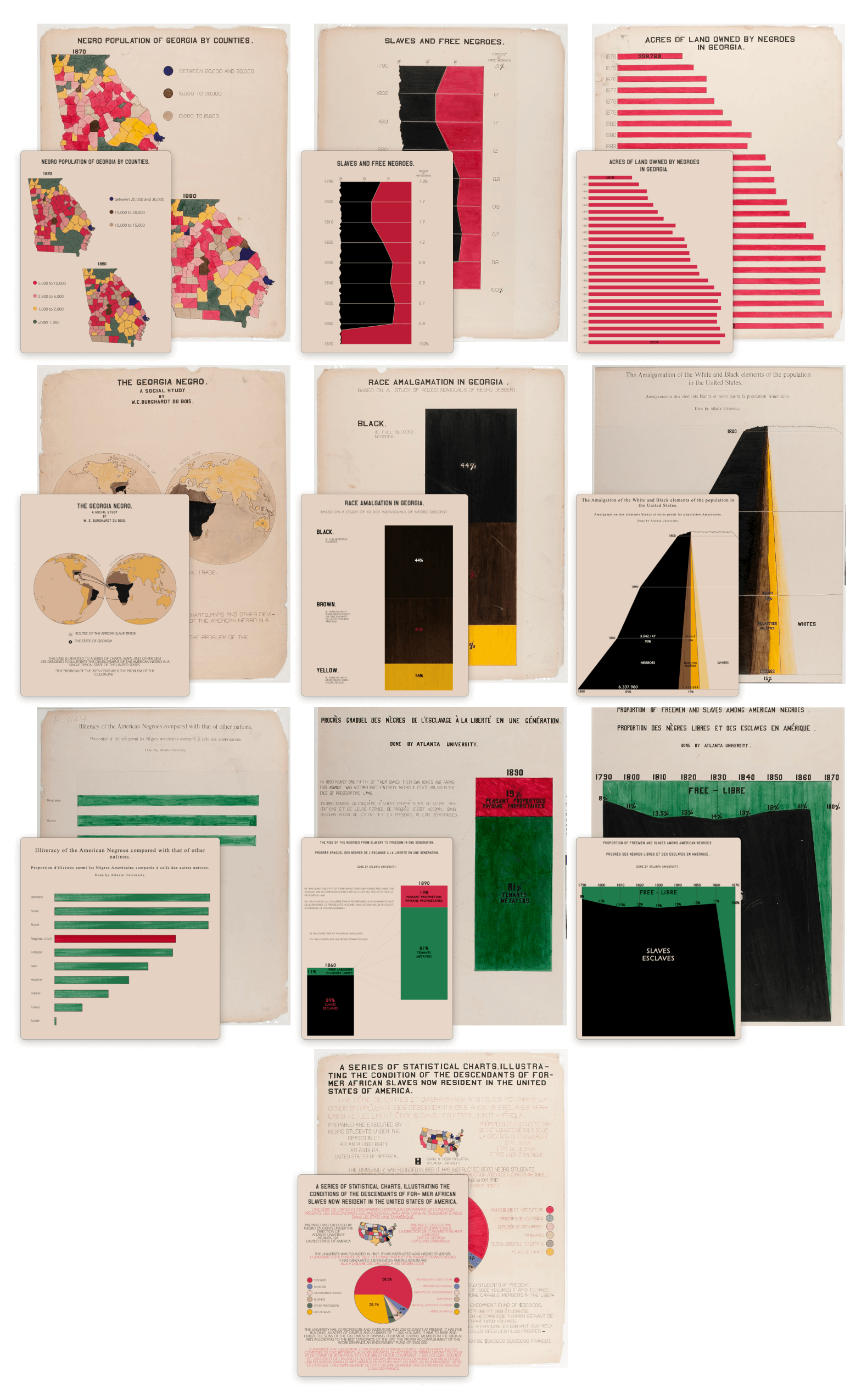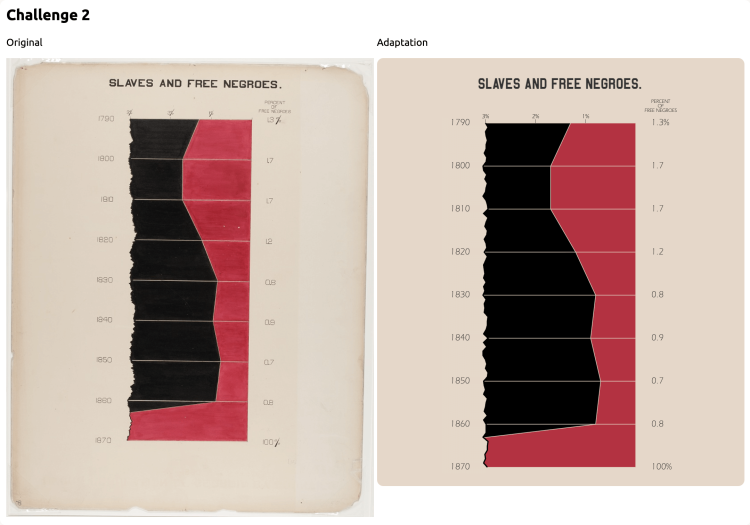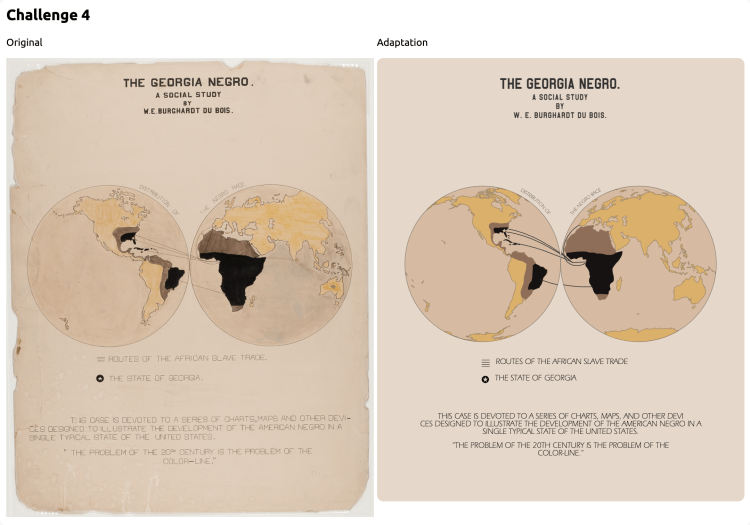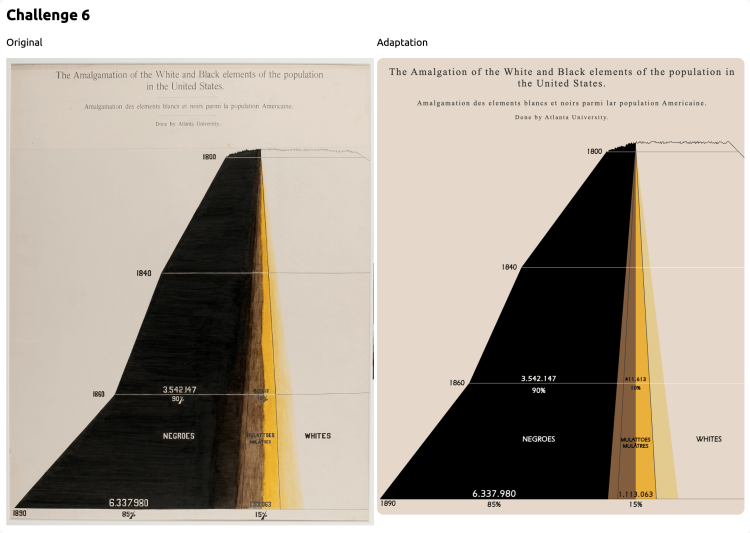
All ten original data visualizations with my recreations on top, ordered ascending per week.

Du Bois's plate no. 12 includes an area chart with a strong red/black color scheme that compares the population of free and enslaved Black people from 1790 to 1890. The chart depicts the rise of slavery, peaking in 1850, and a sudden burst of freedom at emancipation 1865.

Du Bois's plate no. 1 visualizes the transatlantic slave trade, with routes from Europe, Africa, to the Americas and the Caribbean, highlighting Georgia.

Du Bois's plate no. 54 depicts a mountain-like area chart of how the gradient of racial identities changed between 1800 and 1890.
Year: 2024
Roles: Development
Tech: D3, Svelte, Netlify, QGIS
In 2024, I participated in the Du Bois Challenge and reproduced 10 historical data visualizations over the course of 10 weeks.
The goal of this challenge is to celebrate the data viz legacy of W.E.B Du Bois-a Black American civil rights activist, sociologist, and writer-by recreating the visualizations from the 1900 Paris Exposition using modern tools.
Over the ten weeks of the challenge, I learned a lot. My understanding of history deepened by reading great articles, but it was from a technical perspective that I gained unique insights, especially regarding historical data visualizations.
To recap, I wrote an article in the Nightingale magazine of the Data Visualization Society about my experience in the Du Bois Challenge from a technical point of view and collected some tips for recreating historical data viz.